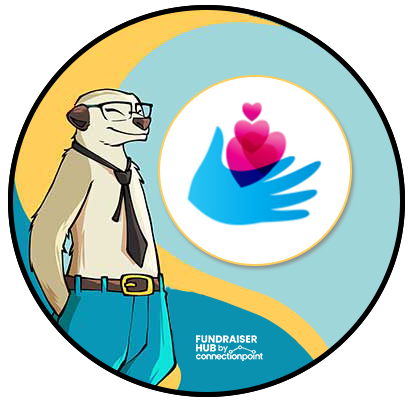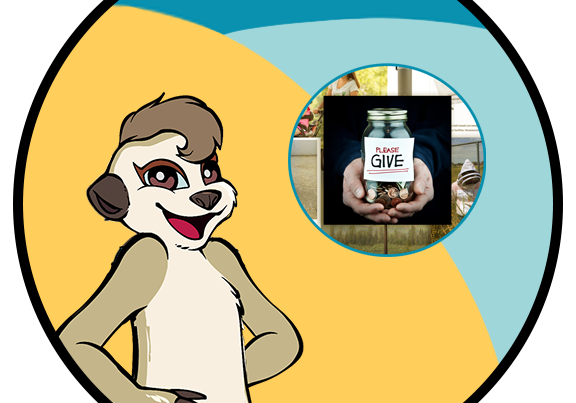Technical writing advice for those tasked with writing a fundraising campaign story… but who may not think of themselves as ‘writers’.

Are you staring at a blank page or screen, wondering how to begin this fundraising campaign story, and seriously considering throwing your computer at the wall?
Congratulations! You’re now a writer.
At some point, everyone considering themselves a ‘writer’ has doubted their ability and fantasized about destroying their notebook or computer. My go-to imagery involves Tannerite.
This last piece of our “How to write a campaign story” series will hopefully help fill some gaps and get your story written down (so you don’t blow your computer to smithereens).
Themes
First, read through these themes a couple of times. Understand them, then apply them to your story.
- Be honest and open. I am NOT implying you would outright lie. We all tend to embellish, at least a little, or go in the opposite direction and omit information. Our intentions are good… we just assume we must say or act a certain way to make our audience more comfortable. Your audience needs to connect emotionally with you (hey, look, that’s the third theme), and they can’t do that unless they hear your truth.
- The more specific, the better. “We provide programs to special needs children” is far too broad. “We give opportunities for those on the autism spectrum to gain their confidence in the real world. For example, last month, we rented an arcade. We turned down the sound and lights, invited a few supportive community members, and our group enjoyed some normal kid things out in public in a safe and comfortable space. They even interacted with strangers and learned valuable social skills.” Re-read your story once it’s written. I bet you could be even more specific.
- Harness your emotions. You are not writing a brochure. You’re telling a story about a specific problem that will change a piece of the world. Skip the formality and have a conversation with your reader. Put your emotions and feelings into the story.
The literal HOW to write a fundraising campaign story
I like headers. I really like headers. They show my brain where the breaks in a story are, so I’m not exhausted at the thought of reading it. So, I’m going to use many headers here. HINT HINT.
Brainstorming
Open a blank document or grab a blank sheet of paper and create a table with each of the seven guidelines in a row. We’ve even got one for you. Now, for each point, write down every idea you have.
Can’t think of anything? Here’s a trick taught by my grade 11 creative writing teacher (still one of my favourite teachers ever): just keep writing! Sing it with me, Dory style! Just keep writing…just keep writing, writing, writing…what do we do? We write, write, write.
Whether you’re typing or using a pen on paper (it doesn’t matter which), start writing everything that comes to mind. If you don’t know what to write, write that down! Do NOT stop; keep going for at least one full minute. Set a timer.
Here’s what it’ll look like:
I’m writing a campaign story but I have no idea what to write, I’m supposed to be writing an opening sentence so I’m going to think about what my topic is, so we try to help kids get in touch with winter sports what do winter sports mean it’s cold as heck so maybe we can make fun of that and say something like “hey guys don’t you just LOVE how the air hurts our face in the winter???”
It’s a brain warm-up! Don’t worry about spelling, grammar, punctuation, etc.; those aren’t important yet. Give it a try; you’ll be shocked to see what comes from your head.
Editing
Edit for clarity first. Take your favourite points from each of the seven sections you’ve brainstormed and fit them into a cohesive story. You’ll likely need to add some words or sentences to make things flow and make sense.
Now, have someone else edit for spelling and grammar! You’ve been looking at this for so long now that your brain will skip over simple mistakes because it thinks it’s smart and wants to fix it for you. Fresh eyes make the best editors.
Visual appeal.
Here are two stories. Just glance at both. Which do you want to read most?
STORY A
STORY B
Visual appeal matters. Some main points on this topic:
- Insert pictures. If you have trouble scaling/formatting, we’ve written an article in our Help Center to guide you.
- If it makes sense, add a video. Since this is a rich text editor, you can only add videos as YouTube or Vimeo links.
- Use some different font colours, but don’t go crazy!
- Try headers to break up your story into easy-to-find sections.
- Font style changes: you should have a maximum of TWO fonts: your header and body font.
Now, take a step back (literally – zoom out of your browser) and look at the whole page. Does it look inviting? Busy? Well-formatted or all over the place? How does looking at it make you feel? Play around with this and have fun with it!
Length
Lastly, how long should your story be?
BRIEF. It must be brief. Ideally, around 500 words, but up to 750 words is okay (although pushing it).
I can almost hear you gasp. Please don’t hate me, but yes, it all needs to fit into a fraction of what you think it should be.
This blog is a poor example of brevity. However, our purposes are different. I’m teaching you something for your benefit (while attempting to be entertaining – how am I doing??), so you’re more likely to spend time reading this. Your reader is being asked for help with something they may not have any connection with. You have time for an elevator pitch.
Break down your story into the most straightforward tale you can make. Remove filler words, like adverbs. Take four sentences and make them into one. Do more than one pass over – shorten it once, then go through and try to shorten it again. This isn’t easy. But it’s worth it.
Summary
Be brief, be emotional, and make your story interesting to look at. And don’t forget that our coaches are here to help! Email support@connectionpoint.com and we’ll get your story strong!
Happy fundraising
Shan
Why storytelling is important for your campaign.
The art of campaign storytelling.
Need help navigating the campaign story editor?




